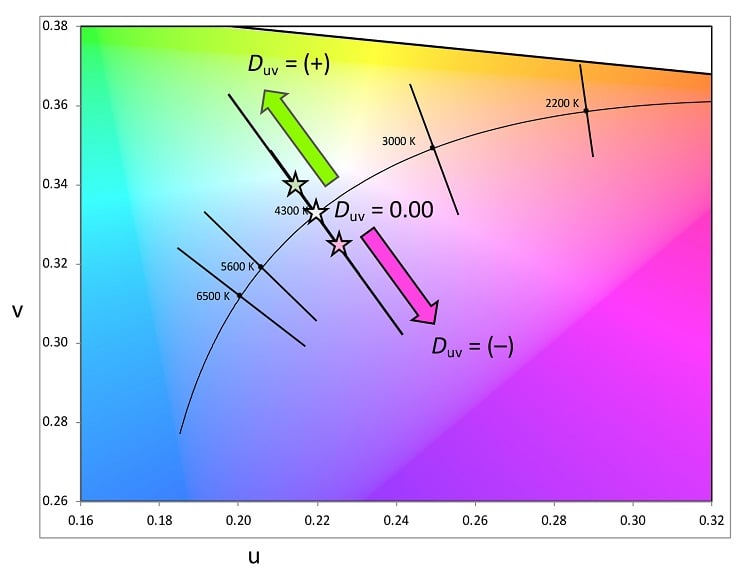In this series, we discuss some of the most frequently asked questions we receive about LEDs. Today, Color Technology Specialist Wendy Luedtke introduces CCT and Duv and what they mean in the world of LED fixtures.
Ready to get fancy? As I mentioned in my earlier post, if a light source does not plot exactly on the blackbody curve, a perpendicular line is drawn from the source’s chromaticity coordinates through the blackbody curve. Where they intersect is the correlated color temperature, abbreviated CCT. Here’s the example I gave in the third installment.

In reality, the light emitted by many luminaires doesn’t plot directly on the blackbody. It plots a little above or below. Because that difference can be visually apparent, it’s important to look at Duv values for any sources not plotting on the blackbody curve. While two sources could technically both be 3500 K, for example, one might be a little pinky warm white while the other might be kind of yellowy/greenish warm white. It may not matter, but if the two sources will be used next to each other, that difference may be very apparent.
Looking at light from a 4100 K source with a positive Duv all by itself, it will likely appear neutral white. Here’s an example of what it might look like:

Repeat that with a 4100 K source with a negative Duv and it, too, will likely appear neutral white:

However, side by side, they may look yellow/green and pink:

Not pretty, is it? That’s why we need to pay attention to Duv values. Up next: ANSI C78.377!





